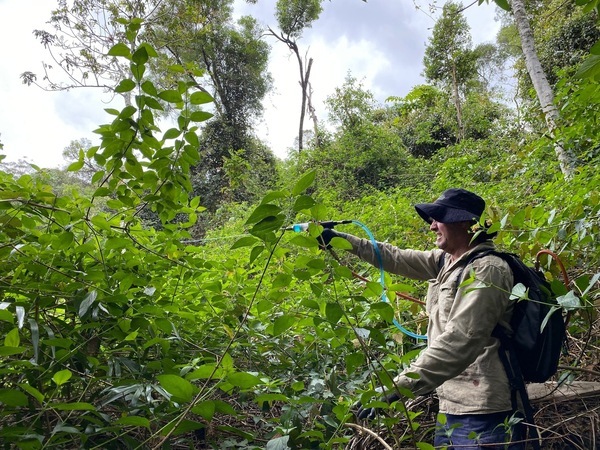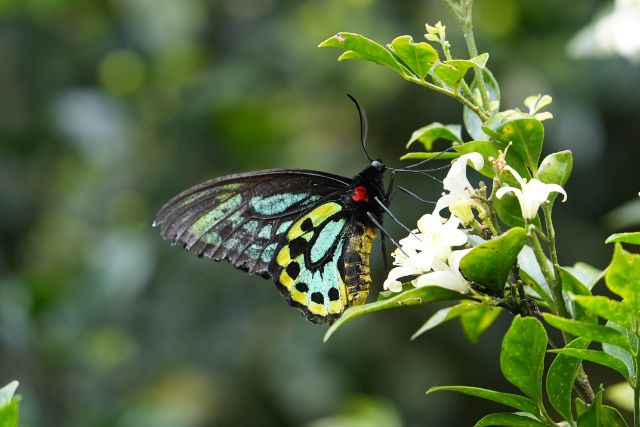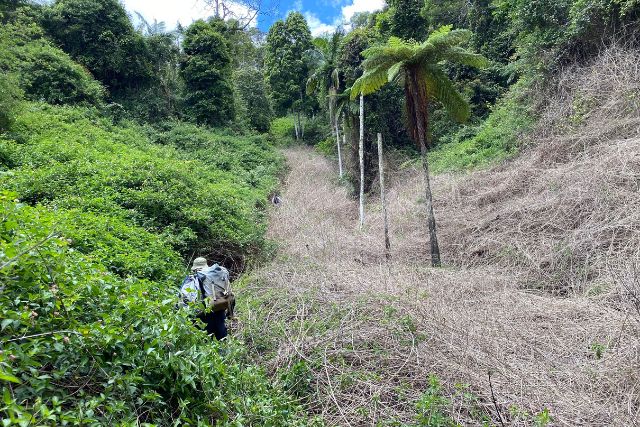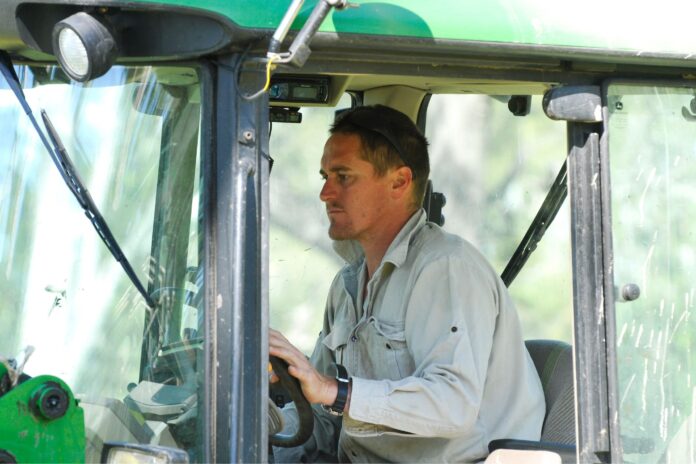A determined and tenacious effort to defeat an imported weed is reaping rewards for native species in the Sunshine Coast hinterland.
On a steep, forested property between Kenilworth and Maleny, a war of the worlds is playing out.
In the classic novel, an alien invasion threatens humanity.
But at Curramore Wildlife Sanctuary, it’s alien invader versus imperilled native species including the koala, marbled frogmouth owl and Richmond birdwing butterfly.
The invader is lantana, once admired for its clusters of tiny, vibrant flowers and brought to Australia in 1841 as an ornamental garden plant.
But within 20 years the prolific shrub, native to central and South America, had leapt the fence and established itself in the wild.
Today, it covers and smothers more than four million hectares of land nationwide and poses an existential threat to native landscapes and wildlife.
As manager of the Australian Wildlife Conservancy’s sanctuary, in the Sunshine Coast hinterland, Klaus Runde has had a front row seat to the destruction.
The conditions there are just right for lantana, with high rainfall and humidity helping it climb up and over native forests, creating dense thickets that are impenetrable to wildlife and block out the sun, killing everything underneath.
“I have seen mature rainforest trees being swallowed by lantana. The overwhelming view of lantana choking up the Australian bush is devastating,” Mr Runde said.

But he’s fighting back at Curramore and winning.
A day in the field involves clambering up steep hillsides for hand-to-hand combat with the invader.
“The most successful method, particularly in lighter infestation areas, is systematic hand weeding. Carefully done, the results are spectacular,” he said.
“We do the hard work of removing the lantana but then nature takes over and almost gratefully rebuilds itself.”
After the treatment, a mix of weeds and native pioneer species recovers.
“This process of weeding can take up to 10 years until a solid canopy is established,” Mr Runde said.
“One of the highlights of my job is returning to a treatment area a year later and then a decade later, to see the way native vegetation generates a permanent canopy that protects itself from future lantana growth.”

Tim White is a land management specialist and chief operations officer for AWC and says the war against lantana at Curramore is also a defence of native species, including many threatened ones.
“Imagine you’re a koala, trying to travel from tree to tree. The lantana can actually be so dense on the ground, and in that lower storey, that it becomes very difficult, impossible, to be moving around on the surface,” he said.
“Or if you are a predatory bird, like the marbled frogmouth owl, you can image how difficult it would be to hunt for small rodents or reptiles on the forest floor.”
Mr White says the work Mr Runde and volunteers have done at Curramore – including more than 11 hectares that were targeted for treatment this year – is a lesson in resilience and tenacity.
“Curramore is very, very steep country, very inaccessible by vehicles or quad bikes, or any sort of mechanical means, so the work that’s been conducted over many years is all manual,” he said.
“It’s so important to have this parcel of land protected – 200 hectares in a massive population growth area for southeast Queensland, where more than 700 native species have been documented.”

Lantana has been deemed a weed of national significance and the latest state of the environment report placed it in equal fourth position, alongside the European red fox, based on how many endangered species it threatens.
Earlier this year, a group called Gardening Responsibly began trialling a consumer labelling scheme designed to ward off any alien plant invasions.
The green-tick scheme labels plants commonly sold in nurseries according to their invasion risk in the hope of preventing more ecological disasters like lantana.
It’s backed by a searchable website to make it easy for gardeners to assess plants they might want to put in the yards. Entire lists can also be uploaded, giving landscapers a handy tool to make good choices on larger projects.
Help us deliver more news by registering for our free daily news feed. All it requires is your name and email. See SUBSCRIBE at the top of this article.





